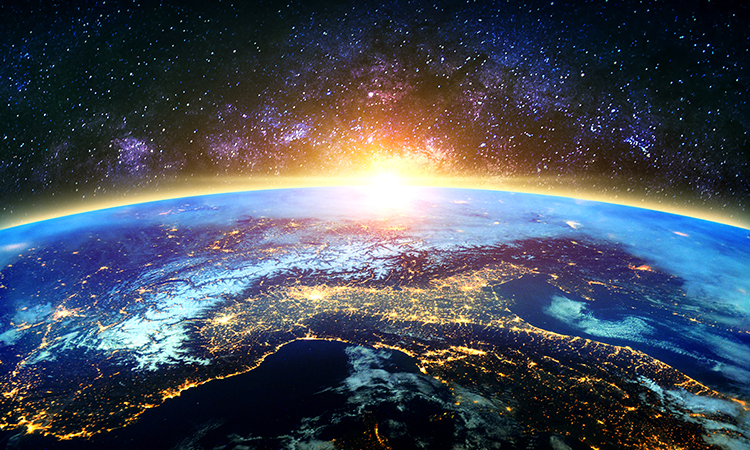Earth’s Purported Nearest Black Hole Reality
Earth’s Purported Nearest Black Hole Reality

What happens if you fall into a black hole? Is it a horrible death by being ripped apart by cosmic forces, or does it suck you in and kill you slowly with extreme temperatures?
Wait, for those who don’t know what is black hole let me tell you.
The only thing known for sure about a black hole is…that it is Black.
Okay, jokes apart. Let me tell you, what is a Black hole?
The black hole at the center of our galaxy is a supermassive monster. It’s the densest place in the universe, and it’s called a black hole. But this thing of ours isn’t just a black hole. It’s a monster. The monster at the center of our galaxy, better known as a black hole, is 4 million times bigger than our Sun.
Supermassive black holes, located at the heart of almost every galaxy, are among the most violent objects in the universe. A black hole holds tremendous gravitational force that light cannot escape its pull. That’s why we cannot see them. It’s impossible to look directly at the black hole. But it is possible to observe the effects of a black hole’s gravity on the objects around it.
There are so many things you should know about the black hole.
This article will help you explore a deeper knowledge about Black holes.
Solar System And Black Hole
The dubbed planet nine has been a disagreement among scientists for years. It lies between five and 15 times Earth’s mass. No one has seen it. But scientists also consider it a Blackhole.
What if it’s a primordial black hole?
It wouldn’t be larger than grapefruit. Unless a distant object falls into the tiny maw of the event horizon, humans cannot detect them.
HR 6819 is a triple-star system. According to it, the closest black hole lies around 1000 light years away.
In terms of the universe’s scope, it is about four times the mass of the Sun. Despite this, there are increasing indications that black holes exist throughout the universe. Including one potentially situated on the NASA spacecraft New Horizons just a few years away. New Horizons made a fast flyby of Pluto’s moon, Charon, in 2015, which was the first time scientists saw Pluto.
The theory presented by Unwin and Scholtz was that a super-heavy and dark object about four inches wide is creeping around the edges of our solar system. These discoveries could also shed light on other baffling mysteries of the universe, including how galaxies persist over billions of years. Sebastien Clesse, a Belgian cosmologist at the University of Brussels, told New Scientist that primordial black holes might be made of dark matter.
Earth’s Nearest Black Hole
Do you know Black holes are born through theory, not from observation?
About 1,000 light-years from Earth, this black hole is close to us. In previous astronomer reports, the star system HR 6819 was made up of bright, massive stars orbiting a black hole in a tight, 40-day orbit around a distant star that does not feed on the black hole.
But after a few months, analysis of the same data by other teams came different.
In the new research led by researcher Abigail frost, In HR 6819 has disproved the existence of a black hole.
Original research by ESO astronomer Thomas Rivinius claimed that HR 6819 was a triple system with one star in a wide orbit and a second star closely orbiting a black hole.
But a study by PhD candidates Ku Leuven and Julia Bodensteiner could contain two stars if one was absorbing much of the mass of the other.
The trio research teamed up and investigated HR 6819. They agreed that there are 2 light sources in the system.
So, they were curious to know if they orbit each other closely, like in the striped-star scenario. Or whether they are far apart, as in the black hole scenario.
According to powerful observations, HR 6819 was a clear case. In a tight orbit, there are two stars but no black hole.
The Reality Of A Black Hole
In the early 1990s, astronomers discovered something that they thought was impossible. They found a new black hole that had eaten up all the matter, leaving nothing but a dark vacuum. Today, astronomers call these kinds of black holes “supermassive.” Black holes, yet, are still a subject of debate. Even though the black hole’s existence has been proven, some people don’t believe it exists.
Black holes are the most extreme objects in the universe. They’re so powerful that nothing can escape from them. Even light cannot escape. This is why they’re called black holes.
Black holes are believed to be the endpoint of a star’s life. When a star dies, it collapses and shrinks. This creates a massive amount of pressure, which is so strong that it can even break apart the star. After the star is gone, the leftover remains to become a black hole.
Some scientists believe that there is no black hole at the center of our galaxy. But this isn’t true. It’s just that the black hole’s gravitational pull is so strong that it is impossible to see.
Conclusion
Earth has been thought to have a black hole in its heart since it was first theorized in the 19th century. Astronomers have finally detected the black hole using the Event Horizon Telescope.
Black holes are a special star that swallows up everything that comes close. They exist in the center of galaxies and have a mass of at least a hundred thousand times that of the Sun. The event horizon is the boundary of the black hole, and it is a border between light and matter. Once a photon (particle of light) enters the event horizon, it can never return to our universe.
Black holes are not the only things scientists believe exist in the universe. They also believe that other things are even more bizarre, which we will discuss in the future.
If you have any questions about this article, please let us know in the comments below!







